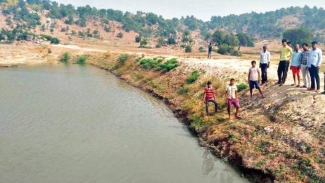
Ancient Mauryan engineering has brought water back to the undulating and rocky terrain of Magadh, the grain bowl of Bihar that had turned almost entirely arid because of abortive modern irrigation policies.
The Magadh region, comprising 10 districts in south-central Bihar, was reeling from its worst water crisis over a decade ago, forcing farmers to board trains to distant cities such as New Delhi and Chandigarh and work there as migrant labourers.
Rainfall was scant, people had long abandoned traditional reservoirs that caught and stored rainwater run-off, the water table in aquifers had depleted from overuse, and modern irrigation canals covered only a small area.
The crisis looked irreversible but Rabindra Pathak, who taught Pali and Sanskrit at a college in Arwal, was certain that the answer lay in the long-forgotten and crumbling aqueducts and water reservoirs that irrigated the fields and fed ancient India’s most glorious empire.
Read details of how this professor motivated villagers to donate money to build channels and embankments to irrigate fields and ease farm woes, in an inspiring report by Subhash Pathak published in Hindustan Times...











